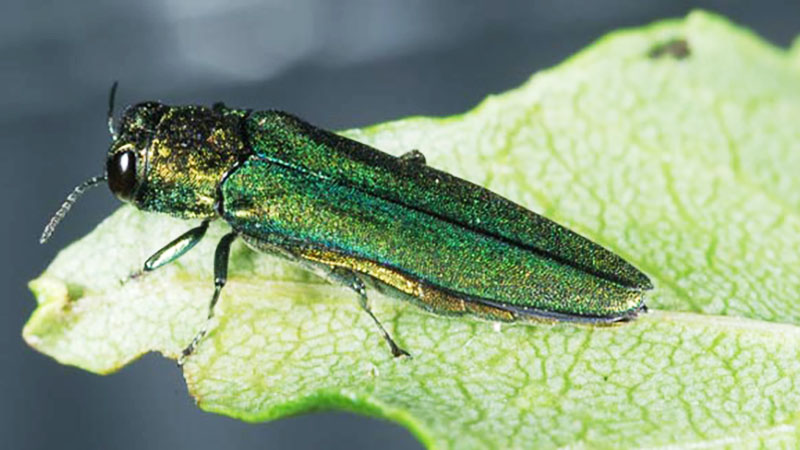
When New York Congressman Horace Greeley famously urged Americans to go west in 1865, somewhere the emerald ash borer must have been listening.
Although the emerald ash borer has only been in the U.S. for 20 years, it has been on a westward - and eastward - migration faster than anyone in a covered wagon traversing the continent in the 19th century ever did.
Since arriving in Detroit in 2002 aboard a Chinese shipping freighter, the ash borer has now been spotted in at least 41 states, and most recently was found in South Dakota and Oregon. And scientists in some locations finally are looking for ways to fight back.
The only states where EAB has not yet been found are Alaska, Arizona, Hawaii, Idaho, Washington, Nevada, New Mexico, Utah and Washington.
Native to eastern Asia, the EAB borer burrows into ash trees as an adult where it lays its eggs. The larvae feed on the layer beneath the bark, disrupting the tree's vascular system and its ability to take up water and nutrients and eventually kill the tree.
EAB entered the United States in 2002 aboard a Chinese cargo ship. Since then, it has spread to 35 U.S. states and five provinces in Canada and caused billions in damage, killing trees on golf courses, in parks and forest land.
Eventually, say scientists with the U.S. Forest Service, the bug will expand throughout the entire range where all 16 North American ash tree species grow.
The U.S. Department of Agriculture confirmed EAB in Oregon on July 15 and believe it probably has been in the state for as many as five years. The Oregon ash, the state’s only native species, plays a critical role in bank stabilization in streams and rivers. The trickle down caused if those trees are lost could be widespread.
As they have watched EAB spread across the country the past two decades, forestry officials there have harvested and stored close to a million Oregon ash seeds to try to preserve the species’ genetic diversity for replanting.
Researchers with the Oregon Department of Forestry will test the seeds to see if any have resistance to ash borers and if so, they may be able to breed resistance into local strains and replant them.

